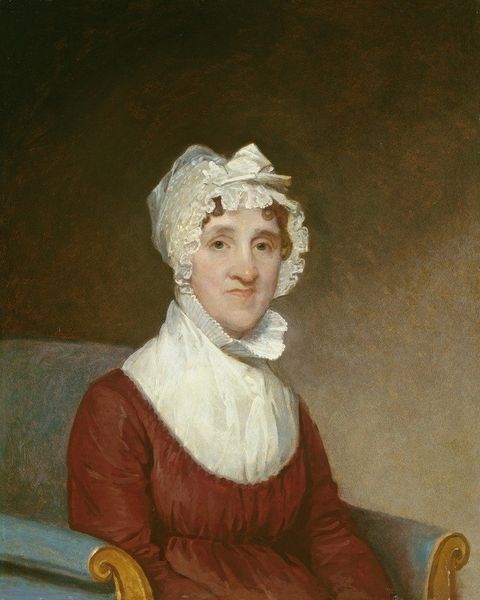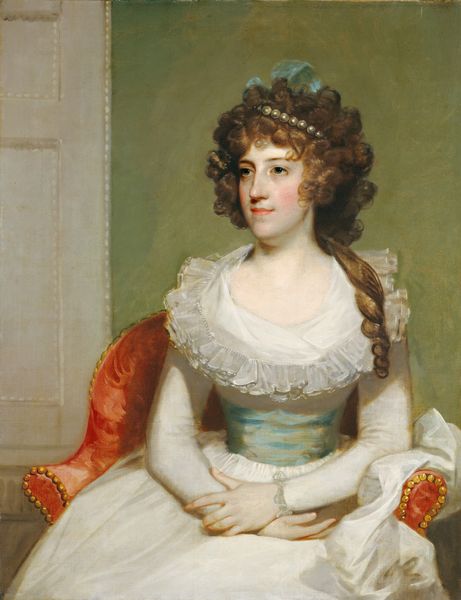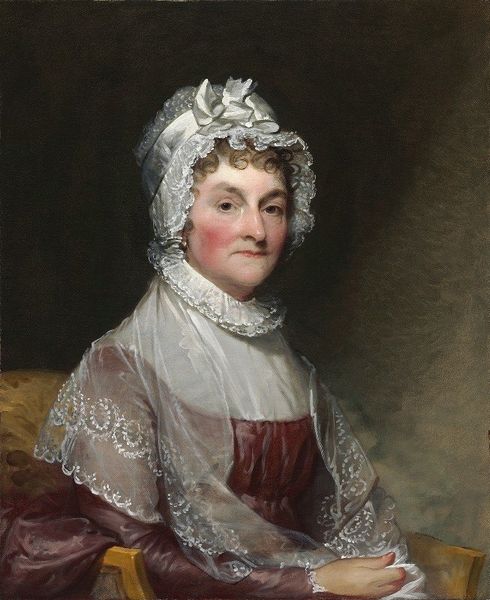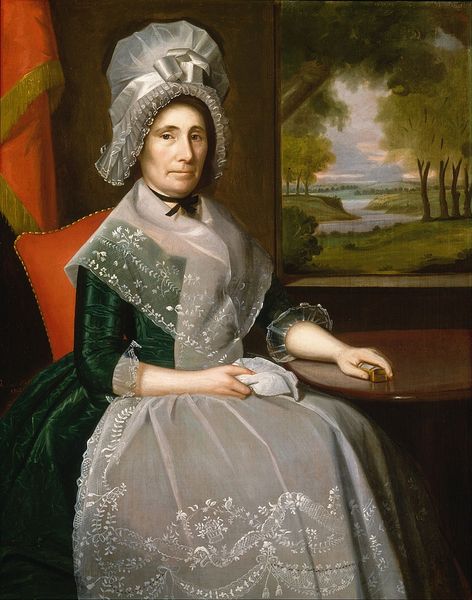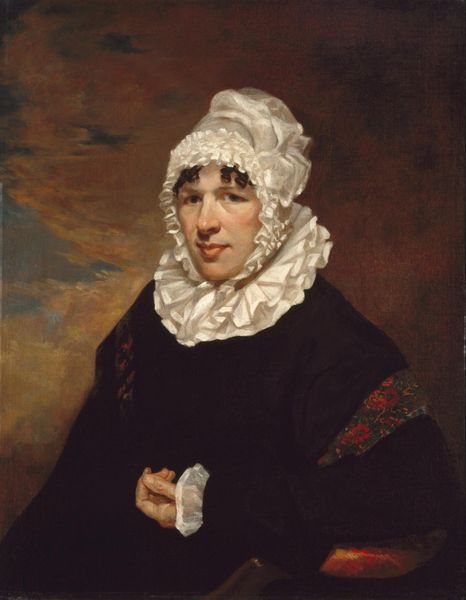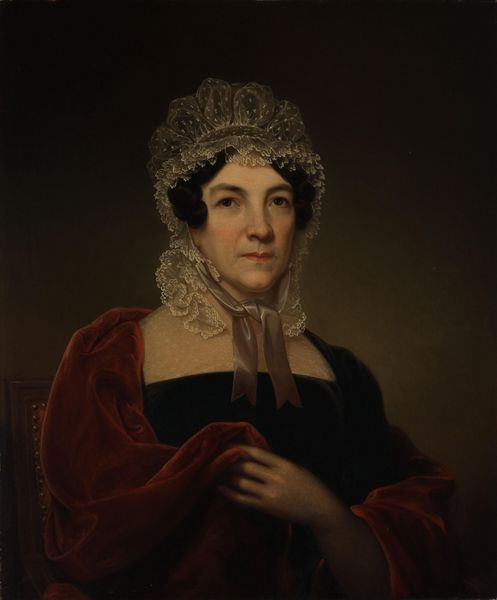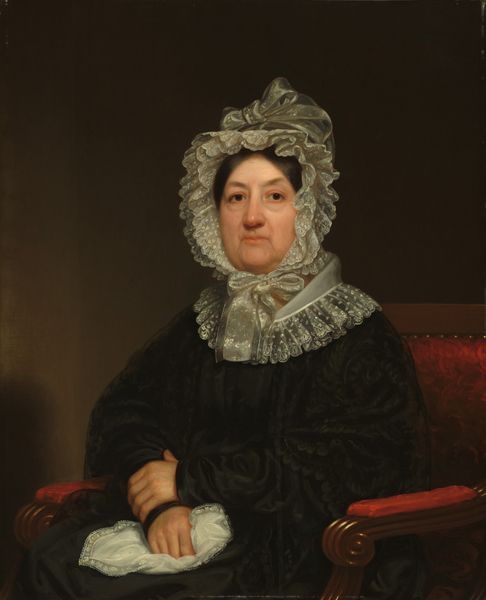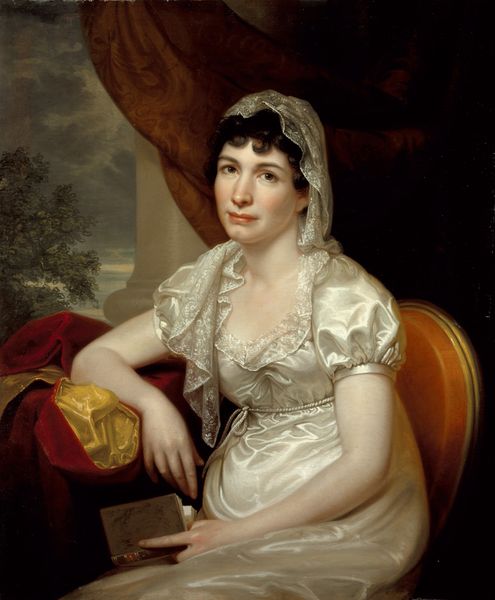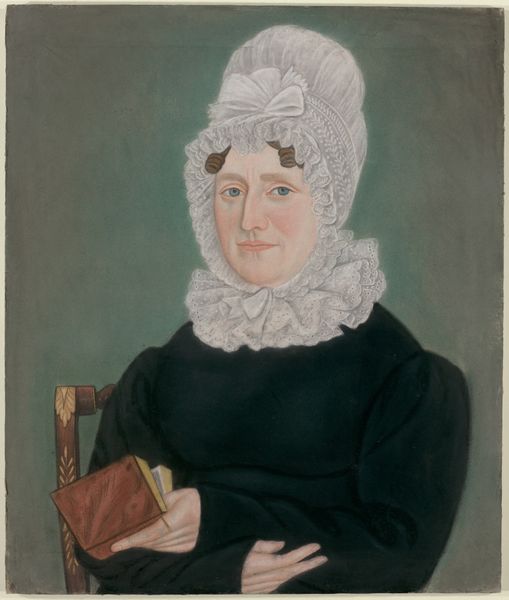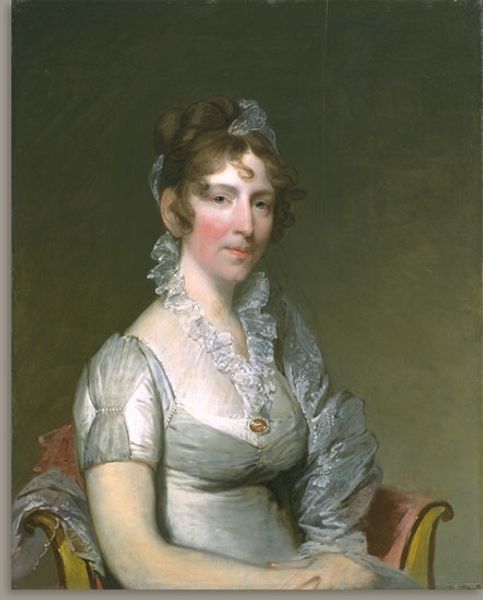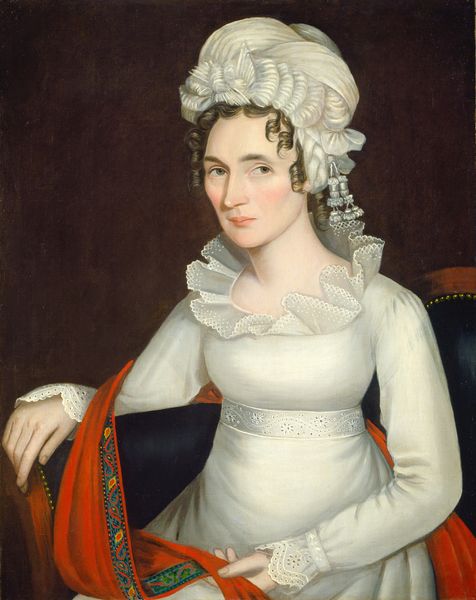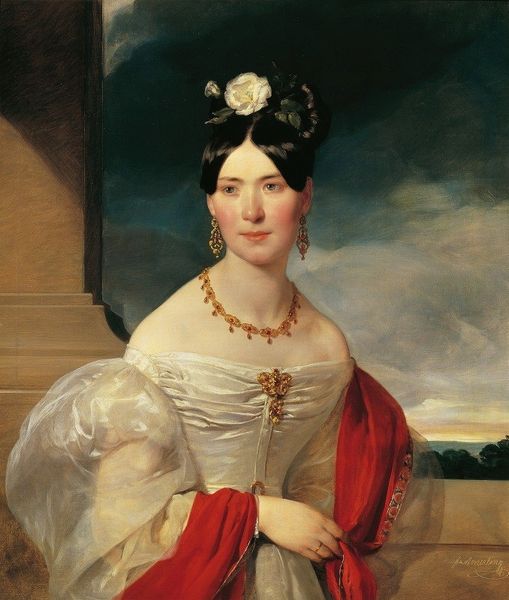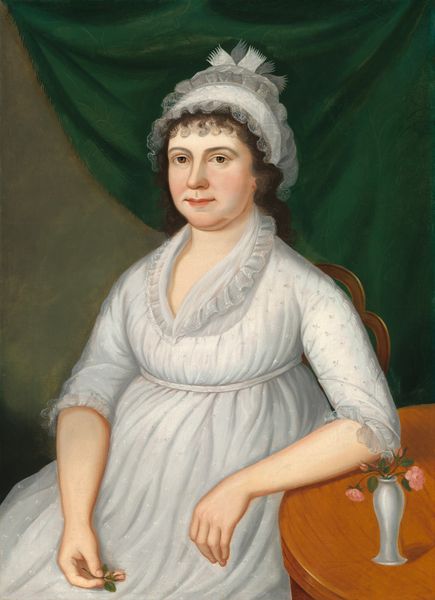
painting, oil-paint
#
portrait
#
painting
#
oil-paint
#
romanticism
#
genre-painting
Copyright: Public domain
Curator: Here we have "Bildnis Einer Dame" by Joseph Kreutzinger. It’s an oil painting, very much in the Romantic style, and typical of the portraiture being done around that time. Editor: There's a certain tranquility about this woman. The soft lighting and the gentle color palette, those muted blues and creams, evoke a sense of serene domesticity, don't you think? Almost like a glimpse into a quiet, private moment. Curator: It's interesting you mention tranquility, because these portraits served very public purposes. They were ways for families to assert status and lineage, creating a visual record of their place in society. Displaying these artworks in the home served as an enduring testament. Editor: Yes, it’s definitely more than just a representation of an individual. The very deliberate staging with the landscape visible in the background and the box there…it speaks to a constructed identity. What does this selection of details seek to express to society at large, I wonder? The woman's clothing also invites questioning of the construction and constraints around femininity at the time. The high collar, for example, and the layers of fabric almost imprison the woman. Curator: Her dress indicates a degree of wealth and social standing, certainly. The intricate lace at the collar, the shawl… those items are markers of affluence and reflect the fashion trends of the period. Artists like Kreutzinger became sought-after specifically for their skill in rendering those details with such accuracy. Editor: The rendering is definitely captivating and invites further questions. If portraits were primarily tools for constructing narratives of prestige and status, what space, if any, did the sitter have in dictating her image, the narrative conveyed, and the agency she possessed? Perhaps, on the one hand, she possessed very little as part of the commodification of women; and perhaps, on the other hand, the details are telling in what they conceal as much as reveal. Curator: It certainly makes you ponder the subject's own desires versus societal expectation. The power dynamic inherent in portraiture of that era— who is seen, how they are seen, and who does the seeing. It also adds complexity when thinking about what is seen by a modern viewer centuries removed from the piece. Editor: Right, viewing through the lens of history also shapes the art piece in a modern, political context. Curator: Indeed. It’s always rewarding to consider an artwork not just for its surface aesthetics, but for what it tells us about the social landscape of the time. Editor: Absolutely. These visual artifacts are incredible sources for historical and ongoing dialogues of art in modern day contexts.
Comments
No comments
Be the first to comment and join the conversation on the ultimate creative platform.
